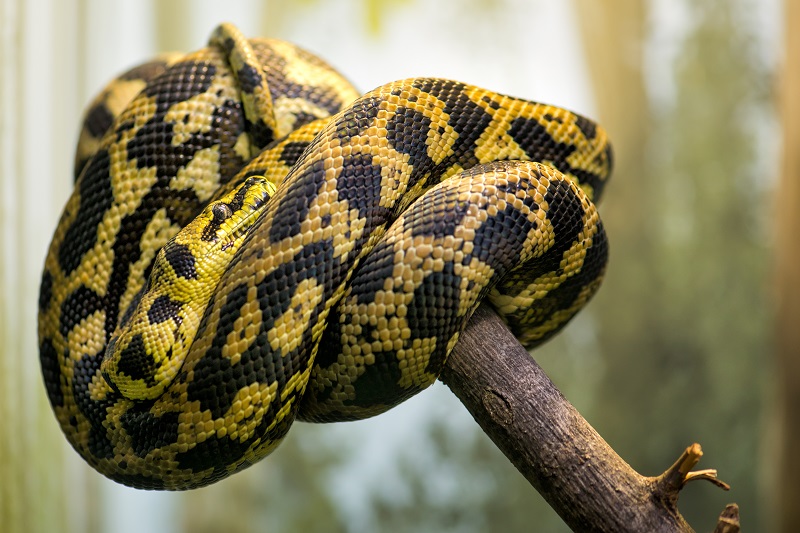Satisfy Your Curiosity: Snake for Sale Inventory Unveiled
Satisfy Your Curiosity: Snake for Sale Inventory Unveiled
Blog Article
Just How to Develop the Perfect Environment for Your Pet Serpent
Producing the suitable habitat for your pet snake is critical to guaranteeing its wellness and wellness. From selecting the right unit to offering the proper temperature level and humidity degrees, there are numerous aspects to think about when establishing an environment that resembles your snake's all-natural environment. By understanding the specific needs of your snake species and implementing the required elements in its environment, you can develop an area where your family pet can flourish. Allow's discover the key components that go right into making the best home for your slithery companion.
Picking the Right Enclosure
The unit offers as the snake's primary environment, impacting its total health and habits. A basic regulation of thumb is to offer an environment that is at least as long as the snake's size and wide sufficient for it to extend out conveniently.
Additionally, the product of the unit is necessary. Enclosures can be made from glass, pvc, wood, or plastic, each with its drawbacks and benefits. Glass enclosures are popular as they supply good presence, while plastic enclosures are light-weight and simple to tidy. Wood and PVC rooms use superb insulation, which is important for controling temperature level and moisture degrees within the environment. Ultimately, the unit needs to resemble the serpent's all-natural habitat as very closely as feasible to guarantee its health and happiness. snake for sale.
Establishing Temperature and Humidity Levels
In order to supply a conducive living setting for your animal serpent within the picked enclosure, attention to preserving ideal temperature and humidity degrees is paramount. Serpents are ectothermic creatures, implying they count on external resources to regulate their body temperature level. For most snake types, the suitable temperature level varieties between 75-85 ° F(24-29 ° C) on the cooler end and 85-90 ° F(29-32 ° C) on the warmer end. To achieve this slope, you can use hot pad, warmth lights, or ceramic heating systems. It is crucial to position thermometers at both ends of the unit to keep an eye on the temperature routinely.
Humidity degrees are equally essential for your snake's health and losing process. The appropriate moisture degree differs relying on the serpent species, with most needing levels between 40-60%. Supplying a huge water dish, misting the unit, or using a reptile humidifier can aid maintain adequate humidity. Nonetheless, ensure correct ventilation to stop excess moisture, which can cause breathing problems. By carefully keeping an eye on and adjusting temperature level and moisture levels, you can develop a secure and comfortable environment for your cherished animal serpent.
Giving Adequate Concealing Areas
Making sure the schedule of ideal hiding areas is crucial for developing a worry-free atmosphere for your family pet snake. To imitate their all-natural environment, supply at least two hiding spots in your serpent's room-- one on the warmer side and one on the cooler side.
Picking the Appropriate Substrate
To develop an appropriate habitat for your family pet snake, what factors should be taken into consideration when choosing the ideal substrate? Picking the ideal substratum for your pet serpent is critical for maintaining its health and wellness. When picking a substrate, numerous factors require to be considered.
Primarily, the substratum should simulate the serpent's native environment as closely as feasible. Various snake species have different environment choices, so it is vital to investigate your certain serpent's native atmosphere to select a suitable substrate. Desert-dwelling snakes might call for a sandy substrate, while forest-dwelling snakes may favor a more moist substrate like cypress mulch or coconut husk.
In addition, the substratum should be risk-free for your serpent. Stay clear of substrates that could be ingested and trigger wellness issues, such as substratums that are also tiny or sharp. Choose for substratums that are non-toxic and simple to tidy to keep a sanitary setting for your pet snake. By very carefully considering these elements, you can create a comfortable and risk-free habitat for your family pet serpent.
Offering Appropriate Illumination and Heating

When it involves illumination, serpents have certain lighting requirements to mimic their all-natural atmosphere. Ultraviolet (UV) lights might be necessary for sure snake varieties to aid with calcium absorption and vitamin D synthesis. Nonetheless, not all snakes require UV illumination, so it's essential to investigate your specific serpent species' demands.
To provide the best balance of illumination and heating, think about using a mix of overhanging Going Here heating lights, hot pad, and thermostats to control temperature levels accurately. Ensure that your serpent's habitat has a temperature slope, permitting it to move between warmer and cooler locations as required. snake for sale. By offering appropriate lights and home heating, you can create a healthy and balanced and comfortable environment for your family pet serpent
Conclusion
To conclude, producing the excellent habitat for your animal snake includes picking the right enclosure, setting up proper temperature level over here and moisture degrees, providing sufficient concealing areas, picking the appropriate substrate, and offering proper illumination and heating. By complying with these standards, you can ensure that your serpent has a comfortable and healthy and balanced setting to flourish in. Keep in mind to regularly change the habitat and keep track of as needed to meet your snake's particular needs.
To create a suitable habitat for your pet snake, what factors should be thought about when choosing the suitable substrate? Different useful content serpent varieties have various environment preferences, so it is vital to research your specific snake's indigenous atmosphere to select a suitable substratum. Desert-dwelling serpents may require a sandy substratum, while forest-dwelling serpents may prefer an extra damp substrate like cypress compost or coconut husk.
Not all snakes need UV lights, so it's necessary to research your particular serpent types' requirements.

Report this page